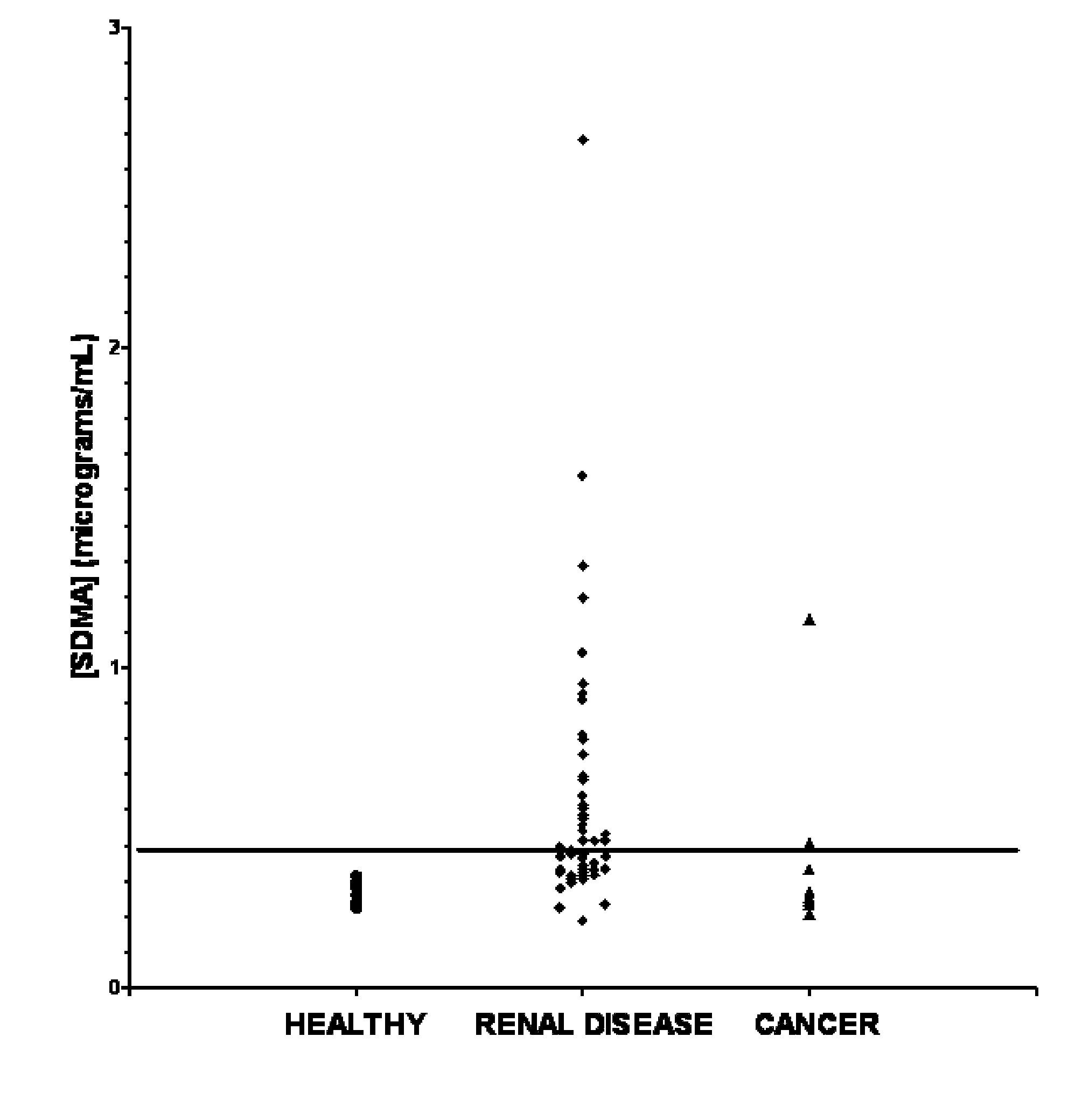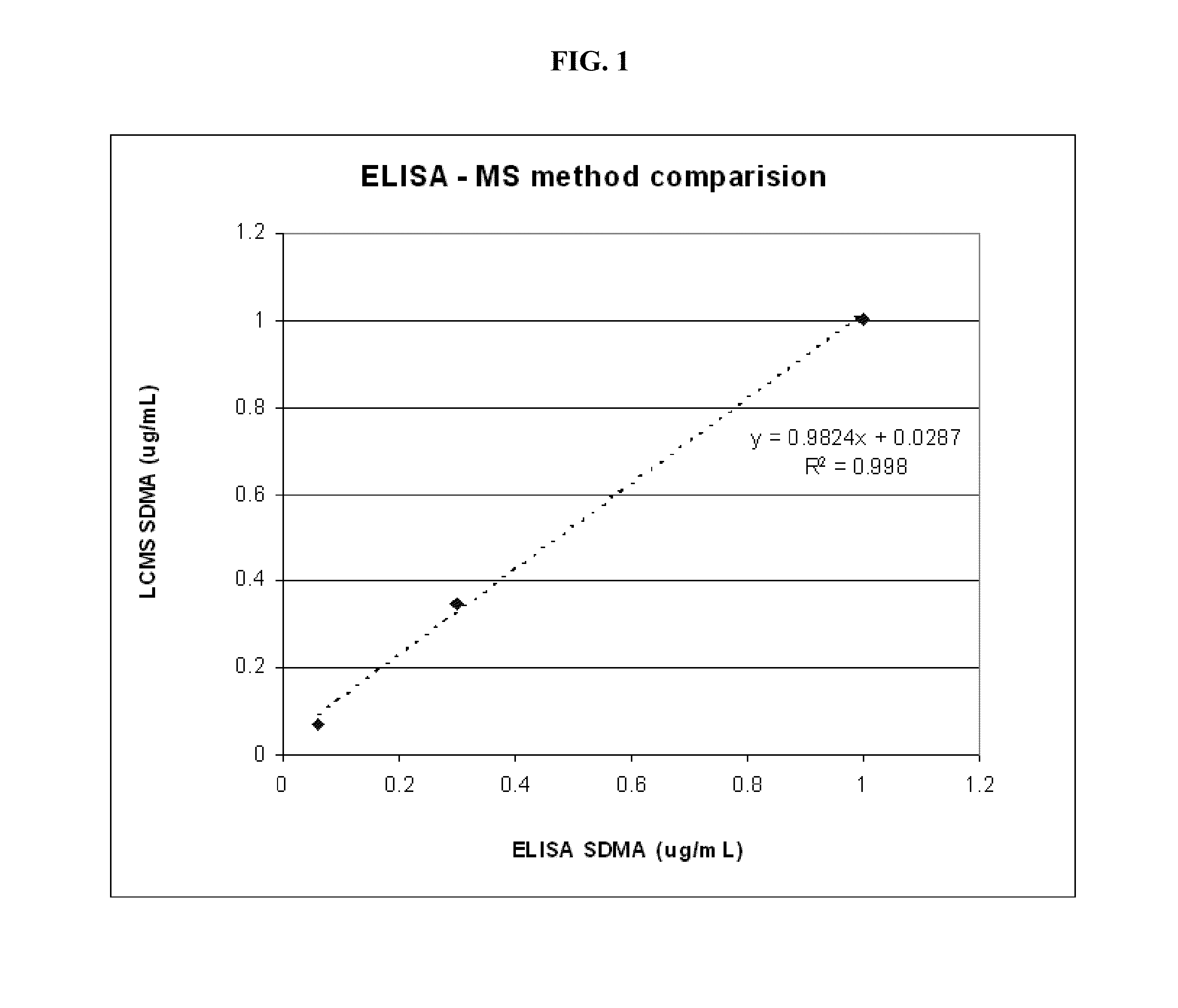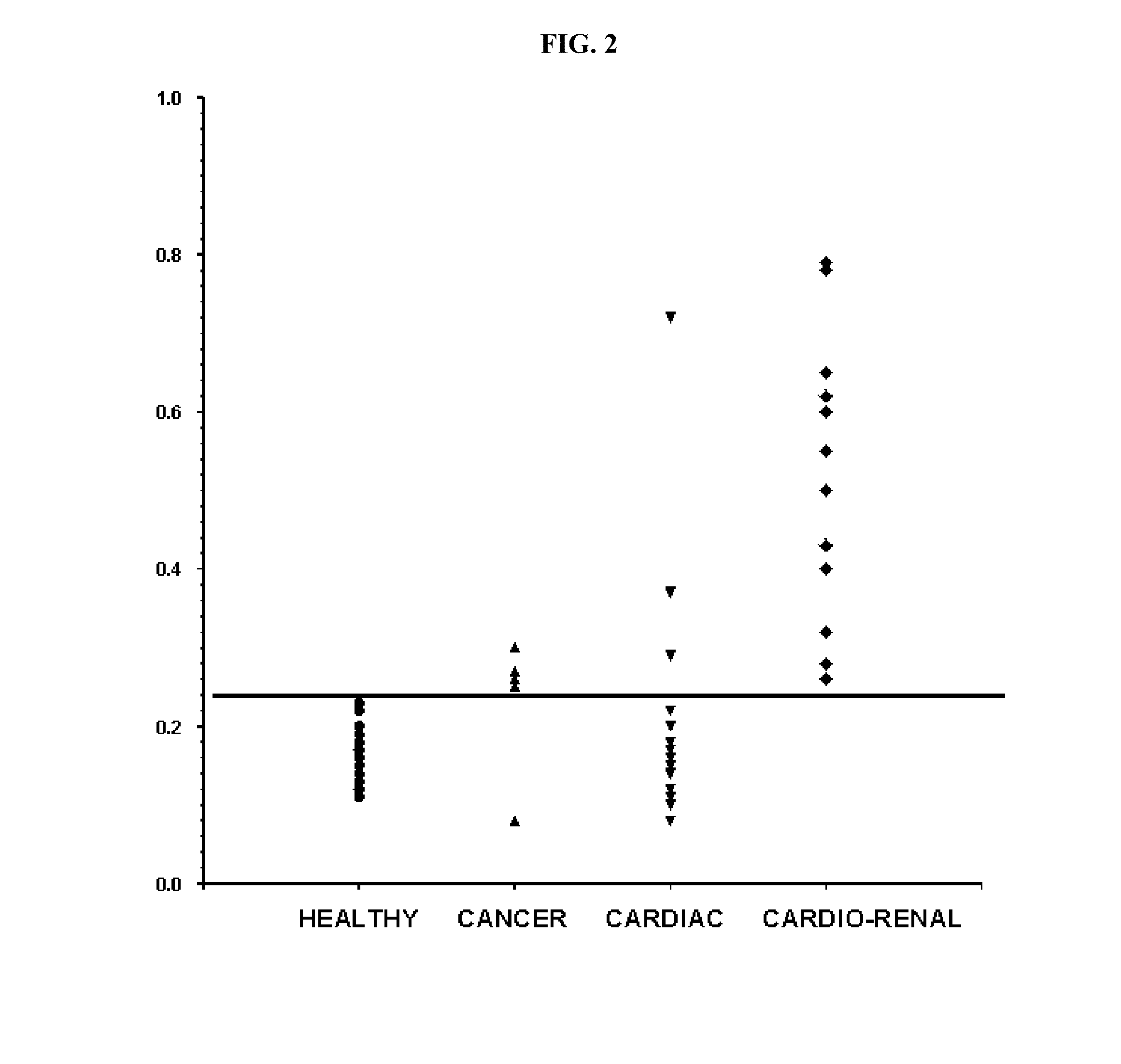Methods for Detecting Renal Disease
a technology of renal disease and detection method, which is applied in the field of determining renal function, can solve the problems of reducing the utility of clinical practice, affecting the diagnosis of renal insufficiency, and affecting the accuracy of renal function, so as to increase the likelihood of death
- Summary
- Abstract
- Description
- Claims
- Application Information
AI Technical Summary
Benefits of technology
Problems solved by technology
Method used
Image
Examples
example 1
Synthesis of the SDMA Cystamide (3) and SDMA Cystamide Hydrochloride Salt (4)
[0148]SDMA cystamide (3) was prepared according to the route of synthesis described in Scheme 1.
[0149](BOC)3-SDMA (1): To a solution of 4.36 g (20 mmol) di-tert-butyldicarbonate (Boc2O) in 20 mL dioxane was added dropwise 550 mg (2.0 mmol) of N, N-dimethylarginine dihydrochloride (SDMA) (commercially available from EMD Chemicals Inc. of Gibbstown, N.J.) dissolved in 10 mL of 5.0 N NaOH over 30 minutes at room temperature with stirring. The resulting reaction mixture was stirred overnight. 30 mL of dichloromethane (DCM) and 30 mL of water were then added to the reaction mixture and the pH adjusted to 6.5 with acetic acid (AcOH). The DCM layer was separated, washed with brine, and dried over anhydrous Na2SO4. The DCM was then removed under reduced pressure to provide a solid. The resulting solid was washed 2 times with 10 mL of hexane. The solid was then dried under vacuum to provide 800 mg of a light yellow ...
example 2
Conjugation of SDMA Cystamide (3) With Maleimide Activated Protein
[0154]A. General procedure for conjugating SDMA cystamide (3) with maleimide activated KLH:[0155]1. Slowly opened a vial of maleimide activated KLH (commercially available from Sigma-Aldrich St. Louis, Mo. (catalog no. K0383)) to release the vacuum.[0156]2. Reconstituted the contents of the vial with 1 mL of water to provide a 5 mg / mL solution of maleimide activated KLH in 20 mM sodium phosphate buffer with 230 mM NaCl, 2 mM EDTA, and 80 mM sucrose, pH 6.6.[0157]3. Prepared a conjugation buffer solution of 20 mM sodium phosphate buffer with 100 mM EDTA and 80 mM sucrose, pH 6.6 by reconstituting conjugation buffer (commercially available from Sigma-Aldrich St. Louis, Mo. (catalog no. C3957)) with 10 mL of water.[0158]4. Dissolved approximately 0.8 mg of hapten (i.e., SDMA cystamide (3)) in 0.5 mL of conjugation buffer. Retained 50 μl of the resulting peptide solution for determination of coupling efficiency (hap-total...
example 3
Method for Generating Anti-SDMA Antibodies
[0202]The immunization protocol for generating the anti-SDMA antibodies was carried out according to the following protocol. Six California breed rabbits were immunized with an SDMA-conjugate. Three of the six rabbits were immunized with SDMA conjugated with BSA (rabbits #155, 156 and 157) and the other three rabbits were immunized with SDMA conjugated with KLH (rabbits #152, 153 and 154) (prepared as described in Example 2). For primary immunizations, each rabbit was injected with 0.5 mg of the SDMA conjugate in 1 ml of phosphate buffered saline (PBS) mixed with 1 ml of Freund's complete adjuvant. Each rabbit received 20-30 intradermal injections on their shaved back. Each rabbit was boosted with 0.25 mg of immunogen in 1 ml PBS mixed with equal volume of Freund's incomplete adjuvant in the hind legs. The boosting shots were given each month after the primary injection. Test bleeds of 5 ml blood were taken from each rabbit 7-10 days after e...
PUM
| Property | Measurement | Unit |
|---|---|---|
| concentration | aaaaa | aaaaa |
| concentrations | aaaaa | aaaaa |
| concentration | aaaaa | aaaaa |
Abstract
Description
Claims
Application Information
 Login to View More
Login to View More - R&D
- Intellectual Property
- Life Sciences
- Materials
- Tech Scout
- Unparalleled Data Quality
- Higher Quality Content
- 60% Fewer Hallucinations
Browse by: Latest US Patents, China's latest patents, Technical Efficacy Thesaurus, Application Domain, Technology Topic, Popular Technical Reports.
© 2025 PatSnap. All rights reserved.Legal|Privacy policy|Modern Slavery Act Transparency Statement|Sitemap|About US| Contact US: help@patsnap.com



